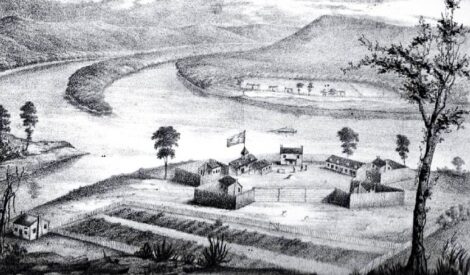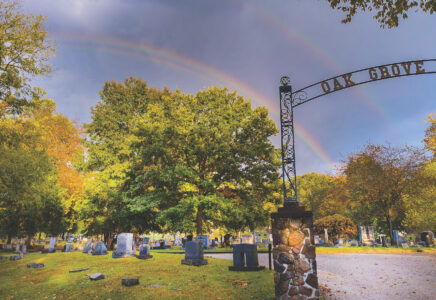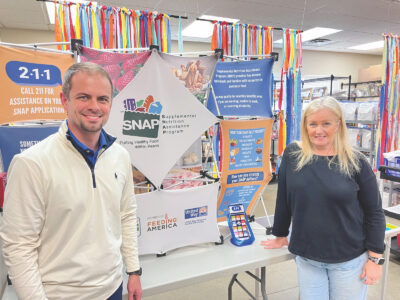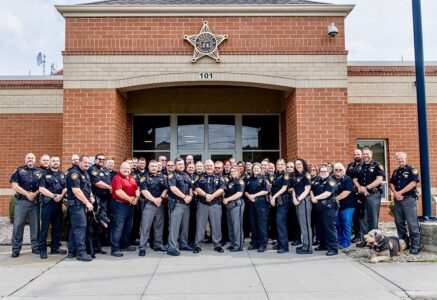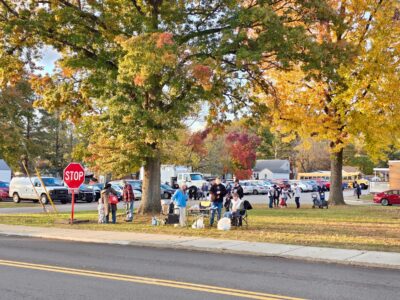‘Eliminate hunger:’ Foodbank’s new director of food, nutrition programs has one goal
Foodbank’s new director of food, nutrition programs has one goal
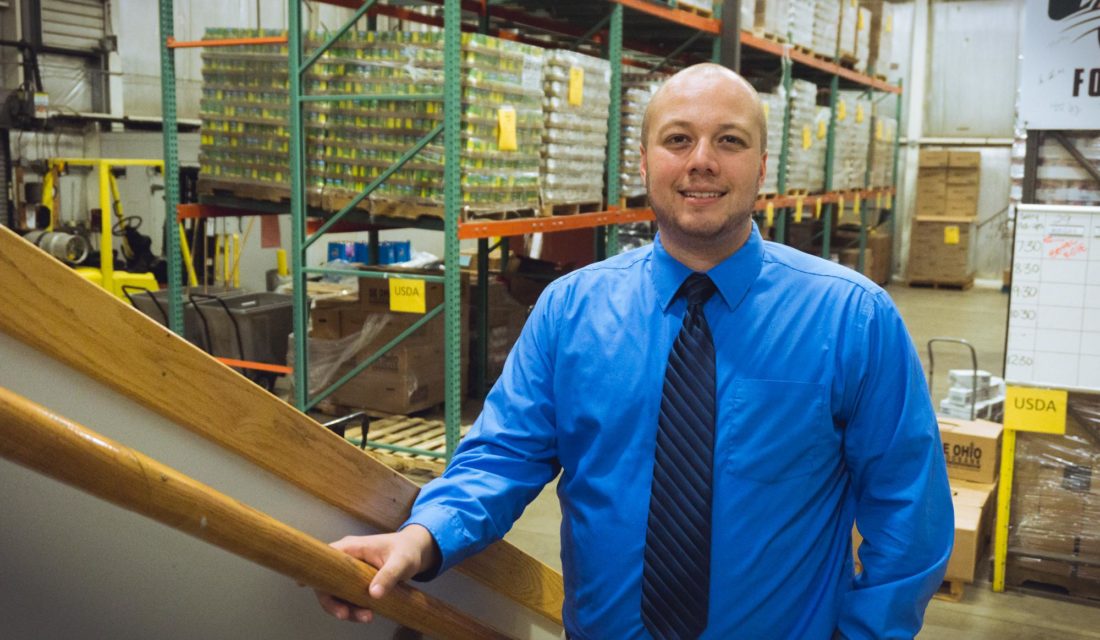
Photo submitted by Community Action Andrew Mayle is the new Director of Food & Nutrition Programs for the Hocking Athens Perry Community Action Southeast Ohio Foodbank, which serves 10 counties, including Washington.
One in six people in Southeastern Ohio are struggling with hunger, including one in four children. They now have one more helping hand, as Belpre resident Andrew Mayle takes on the position of Director of Food & Nutrition Programs for the Southeast Ohio Foodbank. The Foodbank is a part of Hocking Athens Perry Community Action and serves 10 counties–Athens, Gallia, Hocking, Jackson, Lawrence, Meigs, Morgan, Perry, Vinton and Washington.
Last year, the foodbank served more than 155,000 summer meals to children and distributed more than 6.4 million pounds of food to families in need.
“Our main goal, to put it simply, is to eliminate hunger in the area,” said Mayle.
Question: When did you start your new position?
Answer: On Oct. 29. I’m definitely still learning and relying heavily on the staff here to get me settled.
Q: How many people work there?
A: My staff is about 30 to 35. It’s a pretty big operation.
Q: What made you interested in this job? Why was it a good match?
A: My entire sort of adult life I’ve been focused on nutrition and feeding the community. My undergraduate degree was in Nutrition and Community Health and my graduate degree was in Science in Food and Nutrition Science, with a focus more on the community side than the medical. I have a passion for working with the community. I’ve worked at Head Start and WIC. It’s all about educating people and giving everybody a shot.
Q: Was there something in particular that sparked that interest in you, in serving the community?
A: Not really. I’ve just never been one to focus on putting my self first. I’ve always been drawn to helping others.
Q: What about an interest in nutrition? Was that something that came from how you were raised or did that come later in life?
A: It kind of came later. I’ve always been interested in food. I would help my grandma in the kitchen and we’d have homecooked meals every day. But the nutrition part really began in college. At first, I wanted to be a pharmacist and once I realized that probably wasn’t for me, I went to something similar. It’s helping people, not with medicine but with food choices. And I love every second of it. It’s not a regret.
Q: There are a lot of studies and reports about the obesity rates in Appalachia and the lack of access to healthy food. Do you think that’s true of the area? Is it more challenging to spread the message about nutrition here?
A: I agree with it, 100 percent. One thousand percent. It’s very hard in this area to help people make those healthy decisions. It’s an impoverished area, not as educated as other areas and people don’t make as much money. That has a compounding effect. It becomes a cycle. It’s what you were born with, raised with, it’s all you know.
The important thing to remember is that education is key. The more outreach we can do to show people how to make the right decisions and where to get help, the better. It’s hard enough to think about healthy food choices when you can’t pay the bills.
Q: What are some of the programs that the Southeast Ohio Foodbank offers?
A: We serve 10 counties in Southeast Ohio, from Gallia up to Washington and Morgan. We do Commodity Supplemental Food Program (CSFP) for all the counties. We do congregate dining, where seniors come to a senior center for daily meals, for Hocking and Athens counties, and Meals on Wheels. We serve as a purchase program for food pantries. We can give them steep discounts on bulk food. We have about 70 or so agencies that get their food from us. We do a summer feeding program when children are out of school. So, it’s a wide range.
Q: How do you see the need in our area today when it comes to hunger? Are more people in need, fewer, or is there always a stable demand?
A: There’s always a great need in this area. One of the biggest barriers is that we don’t have one great metropolitan city to be our hub. We have a lot of smaller communities. It’s harder for people in rural areas to get to the city and to do their grocery shopping every week. It can be hard to get gas, especially for seniors on fixed incomes. The impoverished, the rural, those who have a hard time getting out on their own, those are who we serve the most.
Q: Among the people you serve, do you see people in all sorts of varied circumstances?
A: We serve anyone in the community. So, we have people who are using a food pantry for the first time in their life because they just got laid off and can’t afford groceries and we have seniors who have been getting Meals on Wheels every day for five years. It runs the gamut. The clientele is varied. We see all kinds and we want to help as many as we can.
Q: Are there any programs that you’re really excited to get to work with?
A: They’re all really important programs for the community but senior nutrition is a big deal, so I would say Meals on Wheels and also the (CSFP). It’s where we deliver a box of food to seniors on a monthly basis. It’s not a warm meal, but it’s basically a grocery stipend for the month.
Q:CSFP is available in all 10 counties that you serve. How many people are part of that program?
A: We’re serving 3,700 (boxes monthly) right now and we actually like to serve closer to 4,200, in terms of our grant numbers. The numbers have dwindled a bit so if people are interested, they should let us know.
Q: You mentioned grants. Are you largely funded by grants? What other sources of income do you have?
A: Grants are how we operate. We operate on grants and donations. We get a lot of donations from corporations, like Kroger and Peoples Bank, and also from individuals. We’re very fortunate that a lot of people support us.
Kate York conducted this interview.

